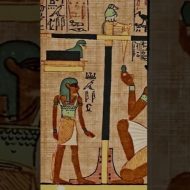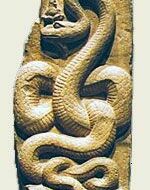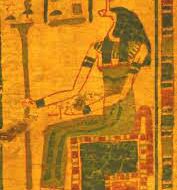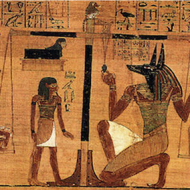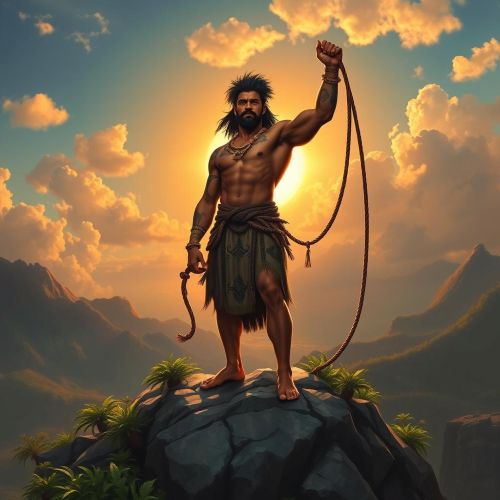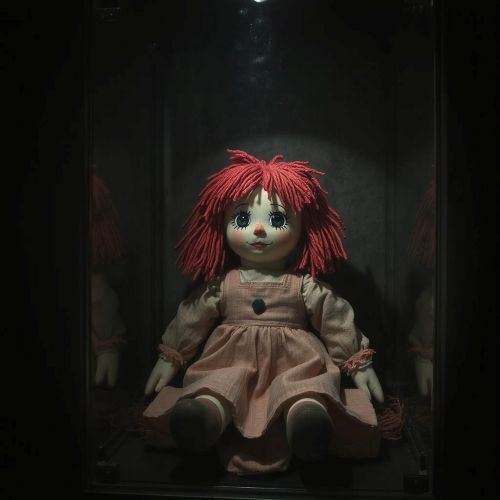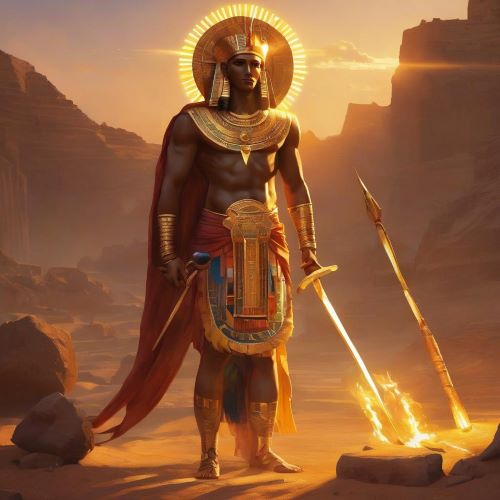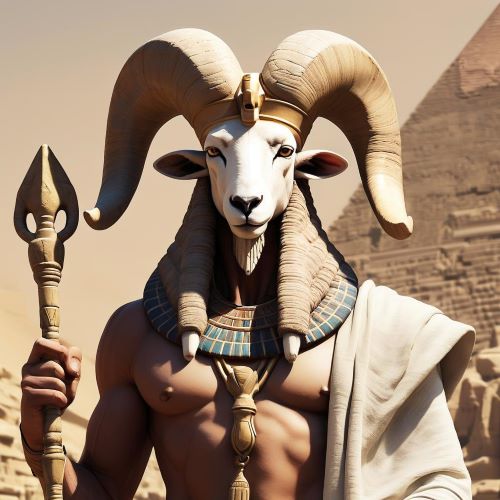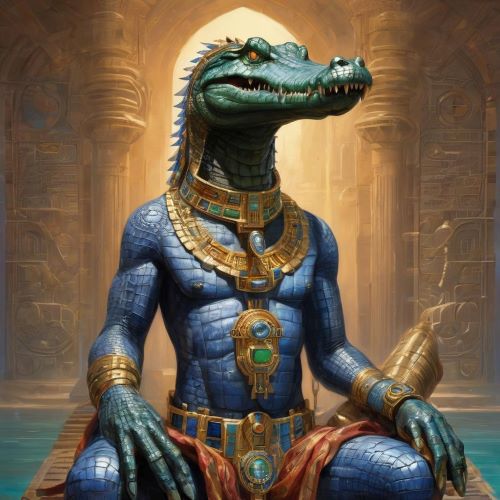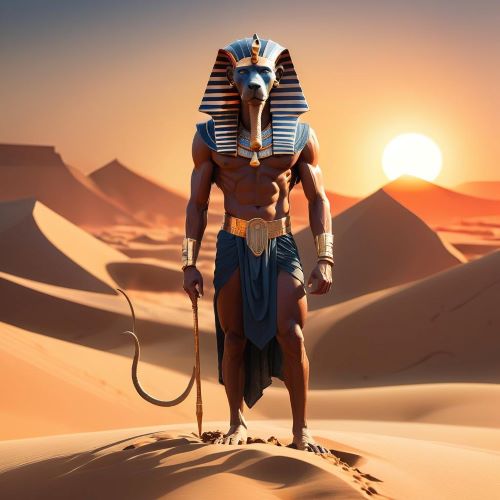Shai : God of Fate
Listen
At a glance
| Description | |
|---|---|
| Origin | Egyptian Mythology |
| Classification | Gods |
| Family Members | Meskhenet, Renenutet (Wives) |
| Region | Egypt |
| Associated With | Fate, Destiny, Lifespan |
Shai
Introduction
Shai, also known as Sai, Shay, or Psais in Greek, served as the embodiment of the concept of fate or destiny in ancient Egypt. The etymology of his name, signifying “that which is ordained,” succinctly captures the essence of his role. According to Egyptian belief, Shai held the power to determine the duration of each individual’s life, being present at their birth.
Functioning as the guardian of fate and destiny, Shai played a pivotal role in shaping the destinies of both mortals and deities. Not confined to the traditional roles of a warrior god, sun god, or god of death, Shai represented something more elemental – the weaver of destiny, the arbiter of life’s course, and the subtle force guiding every step of a soul’s journey. Notably, Shai possessed no strict gender, adding to the mysterious and impartial nature of this ancient Egyptian deity.
Physical Traits
Shai’s presence in Egyptian art was infrequent, yet when he did appear, it was generally in the form of a male god, particularly in scenes depicting the weighing of the heart. Occasionally, he took on the guise of a cobra, a man with a snake head, or a birth brick with a human head. Unlike other deities adorned with ornate crowns and vibrant colors, Shai remained a mysterious figure, even in his visual representation. There are no distinct statues or paintings portraying him in complete human form. Instead, allusions to his existence are discovered in hieroglyphs and fragments of text.
In rare instances, Shai emerges as a mummy-like figure holding a scribe’s palette and reed, symbolizing his involvement in crafting the script of lives. At other times, he takes the form of a ram, emblematic of the cycle of birth, death, and rebirth under his watchful gaze. The depictions of Shai in ancient Egyptian art reveal a unique presentation of this deity. Often depicted as a standing or kneeling man, Shai is frequently shown with a feather adorning his head, representing the weight and equilibrium of fate. This feather, a recurrent motif in Egyptian mythology, signifies truth and justice, underscoring Shai’s role as an impartial arbiter in the cosmic order.
Family
In his male manifestation, Shai was commonly referred to as the spouse of Renenutet, a goddess of fate and destiny responsible for bestowing each individual with their secret name at birth, or Meskhenet, a goddess overseeing childbirth. These three deities were frequently portrayed together. Unlike many gods with intricate family trees and divine lineages, Shai stood in isolation. No myths recount the lineage of his parents or mention any siblings. He existed from the very dawn of creation, a primordial force interwoven with the fabric of existence.
Yet, Shai’s solitude did not denote an absence of connection. He maintained close ties with other deities, particularly those linked to the realms of life and death. Collaborating with Meskhenet, the goddess of childbirth, Shai played a crucial role in determining the duration of a newborn’s life. In the underworld, he stood alongside Osiris, the god of the afterlife, participating in the weighing of hearts of the departed.
Notably, Shai is often identified as the offspring of Ra, the sun god and supreme deity in the Egyptian pantheon. This familial connection binds Shai intimately to the cosmic order, underscoring his responsibility in upholding balance and harmony in the universe. Additionally, Shai is intricately associated with Ma’at, the ancient Egyptian principle embodying truth, justice, and cosmic order. In his role as the guardian of fate, Shai worked in concert with Ma’at to ensure that the actions of mortals aligned seamlessly with the cosmic harmony that governed the Egyptian worldview.
Other names
Shai is recognized by various alternative names, including Sai, Shait, Shay, and Shoy. Throughout his diverse appellations, each one resonates with a distinct aspect of his dominion. In the epithets bestowed upon him, Shai is referred to as Shemu: The determiner, the arbiter of fate; Renenet: The nourisher, underscoring his impact on individuals’ livelihoods; Ka: The double, establishing a connection to the inner essence of a person; and Neb Ankh: Lord of life, accentuating his authority over both the length and quality of life.
Powers and Abilities
As the deity presiding over fate, Shai held the authority to decide the duration of each person’s life and played a role in the judgment of the departed soul in the Duat. Shai existed as an ambivalent figure capable of either safeguarding or condemning an individual, presenting an accurate account of each life in the Hall of Judgment. Even gods and pharaohs found themselves subject to the whims of fate. Shai’s influence, characterized by subtlety rather than dramatic displays or fiery conflicts, operated from the shadows, intricately weaving the threads of destiny through seemingly ordinary occurrences.
Shai determined not only the length of one’s lifespan but also the challenges, blessings, and, ultimately, the moment when the book of life would be closed. Even the gods, in their divine stature, were not entirely immune to his sway. He exerted control over their fortunes, intertwining triumphs and trials into the intricate tapestries of their divine existence. Shai did not merely dictate fate; he also provided glimpses of hope. Through oracles and dreams, he allowed individuals to catch fleeting insights into the tapestry he wove, granting them the agency to make choices within the framework of their destined path.
Modern Day Influence
Due to the profound influence associated with the concept of fate, Akhenaten, in his introduction of monotheism, asserted that Shai was an attribute of Aten. On the other hand, Ramses II proclaimed himself as the lord of Shai, signifying mastery over fate. In the era of Ptolemaic Egypt, Shai, revered as the god of fate, became linked with the Greek deity Agathodaemon, who was associated with fortune-telling. While the pharaohs of ancient Egypt have long returned to dust, Shai’s legacy reverberates in the contemporary world. The enduring allure of the notion of fate, a guiding force shaping our lives, continues to captivate and inspire.
Artists, writers, and philosophers incorporate their unique interpretations of Shai into their creations. In tarot decks, the symbolism of the Wheel of Fortune resonates with echoes of Shai’s spinning wheel of destiny. Modern astrology, descended from ancient divination practices, seeks patterns in the celestial realms, mirroring Shai’s discernment of life’s intricate patterns. Furthermore, the concept of personal agency, the belief in our ability to shape our own destinies within the constraints of circumstance, finds a harmonious chord in Shai’s subtle influence nudging individuals towards choices.
Related Images
Frequently Asked Questions
What is lorem Ipsum?
I am text block. Click edit button to change this text. Lorem ipsum dolor sit amet, consectetur adipiscing elit. Ut elit tellus, luctus nec ullamcorper mattis, pulvinar dapibus leo.
What is lorem Ipsum?
I am text block. Click edit button to change this text. Lorem ipsum dolor sit amet, consectetur adipiscing elit. Ut elit tellus, luctus nec ullamcorper mattis, pulvinar dapibus leo.
What is lorem Ipsum?
I am text block. Click edit button to change this text. Lorem ipsum dolor sit amet, consectetur adipiscing elit. Ut elit tellus, luctus nec ullamcorper mattis, pulvinar dapibus leo.
What is lorem Ipsum?
I am text block. Click edit button to change this text. Lorem ipsum dolor sit amet, consectetur adipiscing elit. Ut elit tellus, luctus nec ullamcorper mattis, pulvinar dapibus leo.
What is lorem Ipsum?
I am text block. Click edit button to change this text. Lorem ipsum dolor sit amet, consectetur adipiscing elit. Ut elit tellus, luctus nec ullamcorper mattis, pulvinar dapibus leo.

